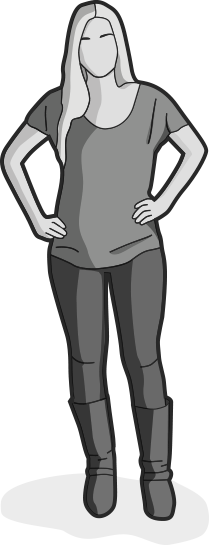Checks and Balances
Are you having trouble viewing this interactive? To optimize your experience, please make sure you are using the most current version of Chrome, Firefox, Safari, or Internet Explorer.
Want to find out about your bank's overdraft policies?
Read Pew's report Checks and Balances: 2014 Update to learn about such policies at the largest banks.
Interested in new rules for bank overdraft programs?
Ask the Consumer Financial Protection Bureau to make your checking account safer.
Bank Overdraft Policies Matter
This interactive tool follows three typical people—Mike, Sarah, and Jen—as they go about their day. They are all responsible with money, but their budgets are a little tight. We will explore how, depending on where they bank, their experiences with overdraft fees can differ dramatically, and why it pays to know your institution's policies and practices. Click on a character to start.
This interactive tool follows three typical people—Mike, Sarah, and Jen—as they go about their days. They are all responsible with money, but their budgets are a little tight. We will explore how, depending on where they bank, their experiences with overdraft fees can differ dramatically, and why it pays to know your institution's policies and practices.


No ATM and Point-of-Sale Overdraft vs. ATM and Point-of-Sale Overdraft
Mike's budget is a little tight this month, but with the money in his checking account he expects to be okay until he gets paid tomorrow.
Mike has a choice between two banks. Bank A and Bank B are identical except for one practice: Bank A will decline ATM and point-of-sale transactions that would overdraw his account, and Bank B will authorize them and charge Mike a $35 fee for each. All transactions are by debit card unless otherwise noted.
Let's see what would happen to Mike if he were to bank at each of these institutions.GO

Chronological Transaction Ordering vs. High-to-low Transaction Reordering
Sarah is waiting to be paid by her employer but thinks that the cash in her checking account will tide her over until payday without her having to transfer funds from another account.
Sarah has a choice between two banks. Bank A and Bank B are identical except for one practice: Bank A orders transactions chronologically, in the order in which they were made throughout the day, and Bank B reorders transactions from high-to-low dollar amount, that is, by debiting the largest transactions first. All transactions are by debit card unless otherwise noted.
Let's see what would happen to Sarah if she were to bank at each of these institutions.GO

Overdraft Threshold vs.
No Overdraft Threshold
Jen is expecting funds from a large check to be deposited into her checking account soon and thinks that the money in her account will stretch until the check clears.
Bank A and Bank B are identical except for one practice: Bank A has a $5 negative balance threshold; that is, it will not charge an overdraft fee if an account is overdrawn by $5 or less. Bank B charges a $35 overdraft fee for all transactions that overdraw the account. All transactions are by debit card unless otherwise noted.
Let's see what would happen to Jen if she were to bank at each of these institutions.GO
No ATM and Point-of-Sale Overdraft vs.
ATM and Point-of-Sale Overdraft





-
Mike views his checking account balance
In the morning, he finds that he has $175 to tide him over until he gets paid tomorrow.
1 of 10 -
Mike takes out cash from an ATM
He notices that he spent all the cash in his wallet the other day, and he withdraws $80 from an ATM. His balance is now $95.
2 of 10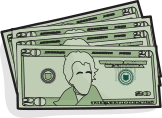
-
Mike buys breakfast
He stops at a nearby diner for breakfast and spends $6.63 for his meal using his debit card. His balance is now $88.37.
3 of 10
-
Mike pays a bill online
A utility payment for $19.86 is due, and he pays it from his checking account, leaving him with a balance of $68.51.
4 of 10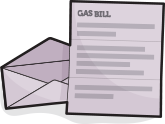
-
Mike stops for lunch
He swings by his favorite restaurant to grab lunch, which costs him $9.99. His balance is now $58.52.
5 of 10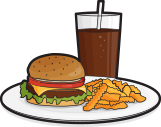
-
Mike needs gas for his car
He has a road trip planned for the coming weekend and tops off his tank. It costs him $23.90, leaving him with a balance of $34.62.
6 of 10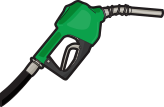
-
Mike grabs dinner
While Mike is out, he meets some friends for dinner, and they split the check. The bill comes to $18.98, and his balance is now $15.64.
7 of 10
-
Mike's car needs an oil change before his trip
The oil change costs $22.53. Bank A declines the transaction, so Mike pays cash. Bank B allows the transaction and charges a $35 fee.
8 of 10
-
Mike buys a new toothbrush and toothpaste
The toiletries cost him $6.48. His balance with Bank A is now $9.16. Bank B allows this transaction and charges him another $35 fee.
9 of 10
-
By banking at Bank A, Mike would have one transaction declined and have to pay with cash. Had he banked at Bank B, Mike would have incurred two $35 overdrafts for a total of $70 in fees.
10 of 10
Bank with no ATM and POS overdraft
- Starting Balance
- $175.00
- ATM Withdrawal
- -$80.00
- $95.00
- Breakfast
- -$6.63
- $88.37
- Utility Bill
- -$19.86
- $68.51
- Lunch
- -$9.99
- $58.52
- Gas
- -$23.90
- $34.62
- Dinner
- -$18.98
- $15.64
- Oil Change
- -$22.53
- $15.64
- Drug Store
- -$6.48
- $9.16
Ending Balance
$ 9.16
x

Transaction |
Expense | Balance |

Bank with ATM and POS overdraft
- Starting Balance
- $175.00
- ATM Withdrawal
- -$80.00
- $95.00
- Breakfast
- -$6.63
- $88.37
- Utility Bill
- -$19.86
- $68.51
- Lunch
- -$9.99
- $58.52
- Gas
- -$23.90
- $34.62
- Dinner
- -$18.98
- $15.64
- Oil Change
- -$22.53
- -$6.89
- Drug Store
- -$6.48
- -$13.37
Ending Balance
-$ 83.37
x

x

Transaction |
Expense | Balance |
x
Declines debit point-of-sale or ATM transactions resulting in an overdraft—at no cost.

x
Allows debit point-of-sale or ATM transactions resulting in an overdraft—for a $35 fee.

x
"Available balance" is a running tally of accessible funds, before end of day processing.

x
"Available balance" is a running tally of accessible funds, before end of day processing.




No ATM and Point-of-Sale Overdraft vs. ATM and Point-of-Sale Overdraft
Like nearly 1 in 5 Americans who has either overdrawn a checking account or had a transaction declined in the past year, Mike, Sarah, and Jen attempted to spend more money than they had available, resulting in overdrafts or declined transactions.
Their choice of bank had a major impact on how many expensive overdraft fees they ran up or whether they had to pay any. By disallowing overdrafts at the point of sale or the ATM, forgiving small overdrafts, and not reordering transactions from high to low by dollar amount, banks can help people such as Mike, Sarah, and Jen limit costly fees on their checking accounts and be more financially secure.
Want to find out about your bank's overdraft policies?
Read Pew's report Checks and Balances: 2014 Update to learn about such policies at the largest banks.
Interested in new rules for bank overdraft programs?
Ask the Consumer Financial Protection Bureau to make your checking account safer.
Chronological Transaction Ordering vs.
High-to-low Transaction Reordering





-
Sarah views her checking account balance
In the morning, she looks online and finds that she has $175 to carry her through until she gets paid tomorrow.
1 of 10 -
Sarah takes out cash from an ATM
She withdraws $80 from an ATM, and her balance is
2 of 10
now $95.
-
Sarah buys coffee
She stops at a local coffee shop and spends $2.63.
3 of 10
Her balance is now $92.37.
-
Sarah buys breakfast
She treats her friend to breakfast at a restaurant and spends $13.11 on their meals. Her balance is now $79.26.
4 of 10
-
Sarah stops for lunch
She grabs a quick lunch at a fast food restaurant, which costs her $6.23. Her balance is now $73.03.
5 of 10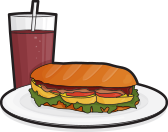
-
Sarah gets ice cream
After lunch, she treats herself to ice cream from a local shop. She spends $2.40 on dessert and now has a balance of $70.63.
6 of 10
-
Sarah needs gas for her motorcycle
She fills up her tank for the work week ahead. It costs $26.03, leaving her with a balance of $44.60.
7 of 10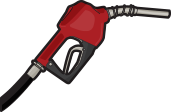
-
Sarah picks up groceries
She runs by the market to stock her fridge for the week and spends $40.29. Her remaining balance is $4.31.
8 of 10
-
Sarah goes on a dinner date
She has dinner at her favorite restaurant and spends $18.98. Her account balance is now -$14.67.
9 of 10
-
Bank A processes these transactions in the order in which Sarah made them, and it charges her one $35 fee for the overdraft at dinner, resulting in a total balance, including fees, of
10 of 10
-$49.67. Bank B reorders the transactions from high-to-low dollar amounts. Her account is overdrawn after the fourth transaction, which is her breakfast, and she is charged four $35 fees, resulting in a total balance, including fees, of -$154.67.
Bank with chronological ordering
- Starting Balance
- $175.00
- ATM Withdrawal
- -$80.00
- $95.00
- Coffee
- -$2.63
- $92.37
- Breakfast
- -$13.11
- $79.26
- Lunch
- -$6.23
- $73.03
- Ice Cream
- -$2.40
- $70.63
- Gas
- -$26.03
- $44.60
- Groceries
- -$40.29
- $4.31
- Dinner
- -$18.98
- -$14.67
Ending Balance
-$ 49.67
x

Transaction |
Expense | Balance |

Bank with high-to-low reordering
- Starting Balance
- $175.00
- ATM Withdrawal
- -$80.00
- $95.00
- Coffee
- -$2.63
- $92.37
- Breakfast
- -$13.11
- $79.26
- Lunch
- -$6.23
- $73.03
- Ice Cream
- -$2.40
- $70.63
- Gas
- -$26.03
- $44.60
- Groceries
- -$40.29
- $4.31
- Dinner
- -$18.98
- $14.67
Ending Balance
-$ 154.67
x

x

x

x

Transaction |
Expense | Balance |
x
Processes transactions chronologically—in the order they were made throughout the day.

x
Reorders transactions from high-to-low dollar amount—the largest transactions first.

x
"Available balance" is a running tally of accessible funds, before end of day processing.

x
"Available balance" is a running tally of accessible funds, before end of day processing.




Chronological Transaction Ordering vs.
High-to-low Transaction Reordering
Like nearly 1 in 5 Americans who has either overdrawn a checking account or had a transaction declined in the past year, Mike, Sarah, and Jen attempted to spend more money than they had available, resulting in overdrafts or declined transactions.
Their choice of bank had a major impact on how many expensive overdraft fees they ran up or whether they had to pay any. By disallowing overdrafts at the point of sale or the ATM, forgiving small overdrafts, and not reordering transactions from high to low by dollar amount, banks can help people such as Mike, Sarah, and Jen limit costly fees on their checking accounts and be more financially secure.
Want to find out about your bank's overdraft policies?
Read Pew's report Checks and Balances: 2014 Update to learn about such policies at the largest banks.
Interested in new rules for bank overdraft programs?
Ask the Consumer Financial Protection Bureau to make your checking account safer.
Overdraft Threshold vs. No Overdraft Threshold





-
Jen views her checking account balance
In the morning, she looks online and finds that she has $175. She expects that this will cover her expenses until the check clears.
1 of 10 -
Jen takes out cash from an ATM
She notices that she spent all the cash in her wallet and withdraws $80 from an ATM. Her balance is now $95.
2 of 10
-
Jen buys coffee
She stops at a local coffee shop and spends $2.63. Her balance is now $92.37.
3 of 10
-
Jen pays a bill online
A utility payment for $19.86 is due, and she pays it from her checking account, leaving her with a balance of $72.51.
4 of 10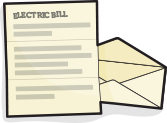
-
Jen stops for lunch
She grabs a quick lunch at a food truck, which costs her $5.89. Her balance is now $66.62.
5 of 10
-
Jen picks up her dry cleaning
She pays $40.29 at the cleaners. Her balance is now $26.33.
6 of 10
-
Jen goes to see a matinee
She meets her sister at the movies. Her ticket costs $8.57, and her balance is now $17.76.
7 of 10
-
Jen meets a friend for dinner
She spends $18.98, and her balance is -$1.22. She is less than $5 overdrawn, so Bank A does not charge a fee. Bank B charges $35.
8 of 10
-
Jen gets ice cream
She buys ice cream for $2.40. Her -$3.62 balance is still within Bank A's threshold; no fee is charged. Bank B charges another $35 fee.
9 of 10
-
Bank A's $5 overdraft threshold prevented Jen from incurring overdraft fees despite her spending a few dollars more than she had in her account, resulting in a total balance of
10 of 10
-$3.62. Bank B charged Jen two $35 fees for the transactions that caused a negative balance, resulting in a total balance of -$73.62.
Bank with an overdraft threshold
- Starting Balance
- $175.00
- ATM Withdrawal
- -$80.00
- $95.00
- Coffee
- -$2.63
- $92.37
- Utility Bill
- -$19.86
- $72.51
- Lunch
- -$5.89
- $66.62
- Dry Cleaning
- -$40.29
- $26.33
- Movie
- -$8.57
- $17.76
- Dinner
- -$18.98
- -$1.22
- Ice Cream
- -$2.40
- -$3.62
Ending Balance
-$ 3.62
x
x
Transaction |
Expense | Balance |

Bank with no overdraft threshold
- Starting Balance
- $175.00
- ATM Withdrawal
- -$80.00
- $95.00
- Coffee
- -$2.63
- $92.37
- Utility Bill
- -$19.86
- $72.51
- Lunch
- -$5.89
- $66.62
- Dry Cleaning
- -$40.29
- $26.33
- Movie
- -$8.57
- $17.76
- Dinner
- -$18.98
- -$1.22
- Ice Cream
- -$2.40
- -$3.62
Ending Balance
-$ 73.62
x

x

Transaction |
Expense | Balance |
x
Does not charge a $35 fee for transactions that overdraw the account by $5 or less.

x
Charges a $35 fee for all transactions that overdraw the account, regardless of the amount.

x
"Available balance" is a running tally of accessible
funds, before end of day processing.

x
"Available balance" is a running tally of accessible funds, before end of day processing.




Overdraft Threshold vs. No Overdraft Threshold
Like nearly 1 in 5 Americans who has either overdrawn a checking account or had a transaction declined in the past year, Mike, Sarah, and Jen attempted to spend more money than they had available, resulting in overdrafts or declined transactions.
Their choice of bank had a major impact on how many expensive overdraft fees they ran up or whether they had to pay any. By disallowing overdrafts at the point of sale or the ATM, forgiving small overdrafts, and not reordering transactions from high to low by dollar amount, banks can help people such as Mike, Sarah, and Jen limit costly fees on their checking accounts and be more financially secure.
Want to find out about your bank's overdraft policies?
Read Pew's report Checks and Balances: 2014 Update to learn about such policies at the largest banks.
Interested in new rules for bank overdraft programs?
Ask the Consumer Financial Protection Bureau to make your checking account safer.
Download resource:




